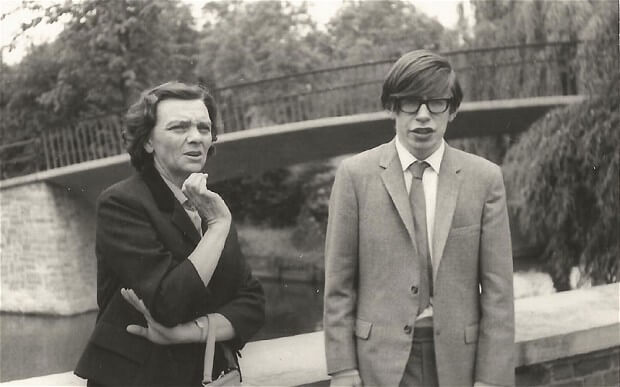Stephen Hawking: A Brief History Of One Of The Greatest Minds

Stephen Hawking (January 8th, 1942 – March 14th, 2018) was arguably one of the greatest minds to grace this planet. A theoretical physicist by profession, Stephen Hawking was best known for his work in the famous book, A Brief History Of Time. The British scientist was diagnosed with amyotrophic lateral sclerosis, a form of motor neurone disease. Following a tracheotomy, Hawking was able to speak using a synthesiser, a sound that has become iconic.
In the beginning, he received a computer program called the “Equalizer” from Walter Woltosz, CEO of Words Plus. However, with time, he lost the functioning of his hands and used his cheek muscles with a rate of about one word per minute. He, later on, collaborated with Intel researchers on systems that could translate his brain patterns or facial expressions into switch activations. However, even after several prototypes, it did not perform as intended. Hence, Swiftkey developed an adaptive word predictor based on his original technology.
Contrary to popular belief, Stephen Hawking never won a Nobel Prize for his contribution to cosmology or science as a whole. However, that barely diminishes the impact he had on the next crop of scientists, many of whom deem him as their inspiration.
Hawking studied at Cambridge University and that is where he started his research on cosmology. For people unfamiliar with cosmology, it is the study of the origin, evolution, and eventual fate of the universe. It is at Cambridge, aged 21 when he was diagnosed a motor neurone disease. At the time, doctors predicted that Hawking will survive for two more years. However, the disease spread at a much slower speed and he went on to live and thrive for over half a decade.
The singularities of gravitational collapse and cosmology
In 1970, Stephen Hawking had his first major breakthrough. Along with Roger Penrose, a mathematician, they applied the mathematics of black holes to the universe and showed that a singularity, a region of infinite curvature in spacetime, lay in our distant past. This is the point from which came the big bang.
In 1974, Hawking claimed that black holes should emit heat and eventually burst out of existence. His proposal that black holes radiate heat stirred up a lot of other debates in the sphere of cosmology. He argued that if a black hole could evaporate, all the information inside over its lifetime would be lost. This claim contradicted the basic law of quantum mechanics, which lead many physicists to disagree with Hawking.
A Brief History Of Time
Published for the first time in 1988, the book soon became a pop culture phenomenon. While his work had garnered him a lot of respect and popularity among the intellects of the world, this book was the catalyst of what Stephen Hawking went on to become. The book sold more than 10 million copies and was translated into over 40 languages. It holds the Guinness World Record for staying on the Sunday Times bestsellers list for an unprecedented 237 weeks. However, many believe it is the greatest book nobody read.
For anyone remotely interested in pop science, A Brief History Of Time is a great dive into the realm of our existence and what Hawking thought of all the great theories by scientists. Through the book, Hawking took the opportunity to explore and publicise some of the most speculative contemporary ideas about space and time. In the book, he talked about concepts like “wormholes” and“spiral galaxies”. But, perhaps, the most controversial of them all was the “superstring theory”. He wrote:
The discussion of the question of why it is that we and the universe exist. If we find the answer to that, it would be the ultimate triumph of human reason. For then we would know the mind of God.
The Pop Culture Phenomenon
It began with The Simpsons, which was quick to acknowledge the growing popularity of the theoretical physicist. He was depicted drinking at a bar with Homer, suggesting he might steal Homer’s idea that the universe is shaped like a doughnut. And appeared in the BBC comedy series Red Dwarf playing himself. He then appeared as a hologram of his image in Star Trek: The Next Generation.
As we said, his voice became so iconic over time that it became a culture reference soon. Pink Floyd used his synthesised voice for the introduction to Keep Talking, on their 1994 album The Division Bell. He, later on, appeared on the hit NBC comedy, The Big Bang Theory.
In 2014, Eddie Redmayne starred in The Theory of Everything, a film based on the memoir Travelling to Infinity: My Life with Stephen, written by Jane Hawking, his ex-wife. He even met Eddie to prepare him for the role.
























